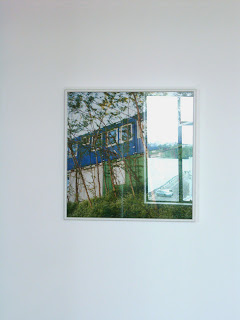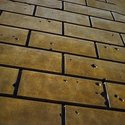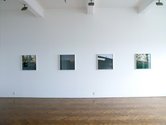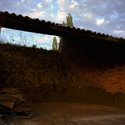John Hurrell – 11 April, 2009
This exhibition of seven coloured photographs by Mladen Bizumic is interesting because of his determination to avoid them being seen as separate, unconnected, discrete objects. Like many other artists, like say Tahi Moore or Sam Rountree Williams, he is keen to merge his work with new environs…The images from the gallery site above show this well.
Auckland
Mladen Bizumic
Global Truths vs Local Reflections
31 March - 25 April 2009
This exhibition of seven coloured photographs by Mladen Bizumic is interesting because of his determination to avoid them being seen as separate, unconnected, discrete objects. Like many other artists, like say Tahi Moore (with several simultaneously playing videos) or Sam Rountree Williams (with works of other artists in close proximity to his own paintings), he is keen to merge his work with new environs. He has deliberately put super reflective glass over his images so that the rest of the room the work is presented in, gets visually mixed into them.
The images from the gallery site above show this well. But optically, it is like sprinkling a handful of sand into your sandwich before eating it. It destroys the singular framed images. Makes them unpalatable. You automatically ignore the artist’s eccentric subversions and position your body so that the calculated irritations are minimised. You reflexly move so you can examine the photographed images clearly.
What Bizumic tries to do in the gallery space he also does with the catalogue. Seven quotations about ‘Truth and Perception’ are presented as a numbered list so their meanings, out of context, bleed into each other as well. And into your thinking about the images positioned before you. Perhaps.
Bizumic calls the photographs Global Truths, in contradistinction to the Local Reflections in situ component of the Crockford space. Of course this is art and art has little to do with truth. It is all about contrivance, and truth has a separate imperative. The seven photographs though - in isolation - make excellent viewing. They look slightly Culbert-like, are all C Prints and are only distinguished by a number each. No other information.
One image (#50) is of a row of double stacked storage containers positioned on the edge of a young beech forest. These green, blue and white metal boxes have windows and are obviously people’s homes hidden away out of sight. Next to that is (#7) a foreshortened facade of what seems to be an Italian building with a fake brick pattern delineated by deep troughs. The oblongs are covered with large pit marks, small craters eroding the tilework. The two images seem to be about functionality and decoration in architecture, and related ethics of housing.
On the main Crockford wall are four photographs. On the left, one (#3) shows three large pumpkins placed on a flimsy table in the middle of an overgrown back yard - solid golden forms that dominate the delapidated setting. In contrast to food: on the far right a green screw-on bottletop from an absent drinking bottle is balanced on a rusting steel girder (#25). Between the two above images is a shot of an empty, cavelike, storage shed built into an earth bank (#44), and a beautiful evening view (#26) of two advertising hoardings silhouetted in the half-light, facing each other across a silent motorway.
Separate in isolation on its own opposite wall, the last image (#77) shows a chair-o-plane, swinging seats with people in them photographed from below, rotating on thin chains attached to twelve points on a whirling star. Tucked into the bottom left-hand corner of a square pale blue sky, we have here a symbol, a cosmology of planets revolving around a giant sun, all orbiting parts interconnected, each component aware of all others.
- John Hurrell







 Advertising in this column
Advertising in this column Two Rooms presents a program of residencies and projects
Two Rooms presents a program of residencies and projects



This Discussion has 0 comments.
Comment
Participate
Register to Participate.
Sign in
Sign in to an existing account.